- Home
- William Shakespeare
Henry V Page 22
Henry V Read online
Page 22
Scenery was limited, though sometimes set pieces were brought on (a bank of flowers, a bed, the mouth of hell). The trapdoor from below, the gallery stage above, and the curtained discovery-space at the back allowed for an array of special effects: the rising of ghosts and apparitions, the descent of gods, dialogue between a character at a window and another at ground level, the revelation of a statue or a pair of lovers playing at chess. Ingenious use could be made of props, as with the ass's head in A Midsummer Night's Dream. In a theater that does not clutter the stage with the material paraphernalia of everyday life, those objects that are deployed may take on powerful symbolic weight, as when Shylock bears his weighing scales in one hand and knife in the other, thus becoming a parody of the figure of Justice who traditionally bears a sword and a balance. Among the more significant items in the property cupboard of Shakespeare's company, there would have been a throne (the "chair of state"), joint stools, books, bottles, coins, purses, letters (which are brought onstage, read or referred to on about eighty occasions in the complete works), maps, gloves, a set of stocks (in which Kent is put in King Lear), rings, rapiers, daggers, broadswords, staves, pistols, masks and vizards, heads and skulls, torches and tapers and lanterns which served to signal night scenes on the daylit stage, a buck's head, an ass's head, animal costumes. Live animals also put in appearances, most notably the dog Crab in The Two Gentlemen of Verona and possibly a young polar bear in The Winter's Tale.
The costumes were the most important visual dimension of the play. Playwrights were paid between PS2 and PS6 per script, whereas Alleyn was not averse to paying PS20 for "a black velvet cloak with sleeves embroidered all with silver and gold." No matter the period of the play, actors always wore contemporary costume. The excitement for the audience came not from any impression of historical accuracy, but from the richness of the attire and perhaps the transgressive thrill of the knowledge that here were commoners like themselves strutting in the costumes of courtiers in effective defiance of the strict sumptuary laws whereby in real life people had to wear the clothes that befitted their social station.
To an even greater degree than props, costumes could carry symbolic importance. Racial characteristics could be suggested: a breastplate and helmet for a Roman soldier, a turban for a Turk, long robes for exotic characters such as Moors, a gabardine for a Jew. The figure of Time, as in The Winter's Tale, would be equipped with hourglass, scythe, and wings; Rumour, who speaks the prologue of 2 Henry IV, wore a costume adorned with a thousand tongues. The wardrobe in the tiring-house of the Globe would have contained much of the same stock as that of rival manager Philip Henslowe at the Rose: green gowns for outlaws and foresters, black for melancholy men such as Jaques and people in mourning such as the Countess in All's Well That Ends Well (at the beginning of Hamlet, the prince is still in mourning black when everyone else is in festive garb for the wedding of the new king), a gown and hood for a friar (or a feigned friar like the duke in Measure for Measure), blue coats and tawny to distinguish the followers of rival factions, a leather apron and ruler for a carpenter (as in the opening scene of Julius Caesar--and in A Midsummer Night's Dream, where this is the only sign that Peter Quince is a carpenter), a cockle hat with staff and a pair of sandals for a pilgrim or palmer (the disguise assumed by Helen in All's Well), bodices and kirtles with farthingales beneath for the boys who are to be dressed as girls. A gender switch such as that of Rosalind or Jessica seems to have taken between fifty and eighty lines of dialogue--Viola does not resume her "maiden weeds," but remains in her boy's costume to the end of Twelfth Night because a change would have slowed down the action at just the moment it was speeding to a climax. Henslowe's inventory also included "a robe for to go invisible": Oberon, Puck, and Ariel must have had something similar.
As the costumes appealed to the eyes, so there was music for the ears. Comedies included many songs. Desdemona's willow song, perhaps a late addition to the text, is a rare and thus exceptionally poignant example from tragedy. Trumpets and tuckets sounded for ceremonial entrances, drums denoted an army on the march. Background music could create atmosphere, as at the beginning of Twelfth Night, during the lovers' dialogue near the end of The Merchant of Venice, when the statue seemingly comes to life in The Winter's Tale, and for the revival of Pericles and of Lear (in the Quarto text, but not the Folio). The haunting sound of the hautboy suggested a realm beyond the human, as when the god Hercules is imagined deserting Mark Antony. Dances symbolized the harmony of the end of a comedy--though in Shakespeare's world of mingled joy and sorrow, someone is usually left out of the circle.
The most important resource was, of course, the actors themselves. They needed many skills: in the words of one contemporary commentator, "dancing, activity, music, song, elocution, ability of body, memory, skill of weapon, pregnancy of wit." Their bodies were as significant as their voices. Hamlet tells the player to "suit the action to the word, the word to the action": moments of strong emotion, known as "passions," relied on a repertoire of dramatic gestures as well as a modulation of the voice. When Titus Andronicus has had his hand chopped off, he asks "How can I grace my talk, / Wanting a hand to give it action?" A pen portrait of "The Character of an Excellent Actor" by the dramatist John Webster is almost certainly based on his impression of Shakespeare's leading man, Richard Burbage: "By a full and significant action of body, he charms our attention: sit in a full theater, and you will think you see so many lines drawn from the circumference of so many ears, whiles the actor is the centre...."
Though Burbage was admired above all others, praise was also heaped upon the apprentice players whose alto voices fitted them for the parts of women. A spectator at Oxford in 1610 records how the audience were reduced to tears by the pathos of Desdemona's death. The puritans who fumed about the biblical prohibition upon cross-dressing and the encouragement to sodomy constituted by the sight of an adult male kissing a teenage boy onstage were a small minority. Little is known, however, about the characteristics of the leading apprentices in Shakespeare's company. It may perhaps be inferred that one was a lot taller than the other, since Shakespeare often wrote for a pair of female friends, one tall and fair, the other short and dark (Helena and Hermia, Rosalind and Celia, Beatrice and Hero).
We know little about Shakespeare's own acting roles--an early allusion indicates that he often took royal parts, and a venerable tradition gives him old Adam in As You Like It and the ghost of old King Hamlet. Save for Burbage's lead roles and the generic part of the clown, all such castings are mere speculation. We do not even know for sure whether the original Falstaff was Will Kempe or another actor who specialized in comic roles, Thomas Pope.
Kempe left the company in early 1599. Tradition has it that he fell out with Shakespeare over the matter of excessive improvisation. He was replaced by Robert Armin, who was less of a clown and more of a cerebral wit: this explains the difference between such parts as Lancelet Gobbo and Dogberry, which were written for Kempe, and the more verbally sophisticated Feste and Lear's Fool, which were written for Armin.
One thing that is clear from surviving "plots" or storyboards of plays from the period is that a degree of doubling was necessary. 2 Henry VI has over sixty speaking parts, but more than half of the characters only appear in a single scene and most scenes have only six to eight speakers. At a stretch, the play could be performed by thirteen actors. When Thomas Platter saw Julius Caesar at the Globe in 1599, he noted that there were about fifteen. Why doesn't Paris go to the Capulet ball in Romeo and Juliet? Perhaps because he was doubled with Mercutio, who does. In The Winter's Tale, Mamillius might have come back as Perdita and Antigonus been doubled by Camillo, making the partnership with Paulina at the end a very neat touch. Titania and Oberon are often played by the same pair as Hippolyta and Theseus, suggesting a symbolic matching of the rulers of the worlds of night and day, but it is questionable whether there would have been time for the necessary costume changes. As so often, one is left in a realm of tantalizing speculatio
n.
THE KING'S MAN
On Queen Elizabeth's death in 1603, the new king, James I, who had held the Scottish throne as James VI since he had been an infant, immediately took the Lord Chamberlain's Men under his direct patronage. Henceforth they would be the King's Men, and for the rest of Shakespeare's career they were favored with far more court performances than any of their rivals. There even seem to have been rumors early in the reign that Shakespeare and Burbage were being considered for knighthoods, an unprecedented honor for mere actors--and one that in the event was not accorded to a member of the profession for nearly three hundred years, when the title was bestowed upon Henry Irving, the leading Shakespearean actor of Queen Victoria's reign.
Shakespeare's productivity rate slowed in the Jacobean years, not because of age or some personal trauma, but because there were frequent outbreaks of plague, causing the theaters to be closed for long periods. The King's Men were forced to spend many months on the road. Between November 1603 and 1608, they were to be found at various towns in the south and Midlands, though Shakespeare probably did not tour with them by this time. He had bought a large house back home in Stratford and was accumulating other property. He may indeed have stopped acting soon after the new king took the throne. With the London theaters closed so much of the time and a large repertoire on the stocks, Shakespeare seems to have focused his energies on writing a few long and complex tragedies that could have been played on demand at court: Othello, King Lear, Antony and Cleopatra, Coriolanus, and Cymbeline are among his longest and poetically grandest plays. Macbeth only survives in a shorter text, which shows signs of adaptation after Shakespeare's death. The bitterly satirical Timon of Athens, apparently a collaboration with Thomas Middleton that may have failed on the stage, also belongs to this period. In comedy, too, he wrote longer and morally darker works than in the Elizabethan period, pushing at the very bounds of the form in Measure for Measure and All's Well That Ends Well.
From 1608 onward, when the King's Men began occupying the indoor Blackfriars playhouse (as a winter house, meaning that they only used the outdoor Globe in summer?), Shakespeare turned to a more romantic style. His company had a great success with a revived and altered version of an old pastoral play called Mucedorus. It even featured a bear. The younger dramatist John Fletcher, meanwhile, sometimes working in collaboration with Francis Beaumont, was pioneering a new style of tragicomedy, a mix of romance and royal-ism laced with intrigue and pastoral excursions. Shakespeare experimented with this idiom in Cymbeline and it was presumably with his blessing that Fletcher eventually took over as the King's Men's company dramatist. The two writers apparently collaborated on three plays in the years 1612-14: a lost romance called Cardenio (based on the love-madness of a character in Cervantes' Don Quixote), Henry VIII (originally staged with the title "All Is True"), and The Two Noble Kinsmen, a dramatization of Chaucer's "Knight's Tale." These were written after Shakespeare's two final solo-authored plays, The Winter's Tale, a self-consciously old-fashioned work dramatizing the pastoral romance of his old enemy Robert Greene, and The Tempest, which at one and the same time drew together multiple theatrical traditions, diverse reading, and contemporary interest in the fate of a ship that had been wrecked on the way to the New World.
The collaborations with Fletcher suggest that Shakespeare's career ended with a slow fade rather than the sudden retirement supposed by the nineteenth-century Romantic critics who read Prospero's epilogue to The Tempest as Shakespeare's personal farewell to his art. In the last few years of his life Shakespeare certainly spent more of his time in Stratford-upon-Avon, where he became further involved in property dealing and litigation. But his London life also continued. In 1613 he made his first major London property purchase: a freehold house in the Blackfriars district, close to his company's indoor theater. The Two Noble Kinsmen may have been written as late as 1614, and Shakespeare was in London on business a little over a year before he died of an unknown cause at home in Stratford-upon-Avon in 1616, probably on his fifty-second birthday.
About half the sum of his works were published in his lifetime, in texts of variable quality. A few years after his death, his fellow actors began putting together an authorized edition of his complete Comedies, Histories and Tragedies. It appeared in 1623, in large "Folio" format. This collection of thirty-six plays gave Shakespeare his immortality. In the words of his fellow dramatist Ben Jonson, who contributed two poems of praise at the start of the Folio, the body of his work made him "a monument without a tomb":
And art alive still while thy book doth live
And we have wits to read and praise to give ...
He was not of an age, but for all time!
SHAKESPEARE'S WORKS:
A CHRONOLOGY
1589-91
? Arden of Faversham (possible part authorship) 1589-92
The Taming of the Shrew
1589-92
? Edward the Third (possible part authorship) 1591
The Second Part of Henry the Sixth, originally called The First Part of the Contention betwixt the Two Famous
Houses of York and Lancaster (element of coauthor-ship possible) 1591
The Third Part of Henry the Sixth, originally called The
True Tragedy of Richard Duke of York (element of co-authorship probable) 1591-92
The Two Gentlemen of Verona
1591-92; perhaps revised 1594
The Lamentable Tragedy of Titus Andronicus (probably cowritten with, or revising an earlier version by, George Peele) 1592
The First Part of Henry the Sixth, probably with Thomas Nashe and others
1592/94
King Richard the Third
1593
Venus and Adonis (poem) 1593-94
The Rape of Lucrece (poem) 1593-1608
Sonnets (154 poems, published 1609 with A Lover's
Complaint, a poem of disputed authorship) 1592-94/1600-03
Sir Thomas More (a single scene for a play originally by Anthony Munday, with other revisions by Henry Chettle, Thomas Dekker, and Thomas Heywood) 1594
The Comedy of Errors
1595
Love's Labour's Lost
1595-97
Love's Labour's Won (a lost play, unless the original title for another comedy)
1595-96
A Midsummer Night's Dream
1595-96
The Tragedy of Romeo and Juliet
1595-96
King Richard the Second
1595-97
The Life and Death of King John (possibly earlier) 1596-97
The Merchant of Venice
1596-97
The First Part of Henry the Fourth
1597-98
The Second Part of Henry the Fourth
1598
Much Ado About Nothing
1598-99
The Passionate Pilgrim (20 poems, some not by Shakespeare) 1599
The Life of Henry the Fifth
1599
"To the Queen" (epilogue for a court performance) 1599
As You Like It
1599
The Tragedy of Julius Caesar
1600-01
The Tragedy of Hamlet, Prince of Denmark (perhaps revising an earlier version)
1600-01
The Merry Wives of Windsor (perhaps revising version of 1597-99)
1601
"Let the Bird of Loudest Lay" (poem, known since 1807 as "The Phoenix and Turtle" [turtle-dove]) 1601
Twelfth Night, or What You Will
1601-02
The Tragedy of Troilus and Cressida
1604
The Tragedy of Othello, the Moor of Venice
1604
Measure for Measure
1605
All's Well That Ends Well
1605
The Life of Timon of Athens, with Thomas Middleton 1605-06
The Tragedy of King Lear
1605-08
? contribution to The Four Plays in One (lost, except for A
Yorkshire Tragedy, mostly by Thomas Middleton) 1606
The Tragedy of Macbeth (surviving text has additional scenes by Thomas Middleton)
1606-07
The Tragedy of Antony and Cleopatra
1608
The Tragedy of Coriolanus
1608
Pericles, Prince of Tyre, with George Wilkins 1610
The Tragedy of Cymbeline
1611
The Winter's Tale
1611
The Tempest
1612-13
Cardenio, with John Fletcher (survives only in later adaptation called Double Falsehood by Lewis Theobald) 1613
Henry VIII (All Is True), with John Fletcher 1613-14
The Two Noble Kinsmen, with John Fletcher
KINGS AND QUEENS
OF ENGLAND: FROM
THE HISTORY PLAYS
TO SHAKESPEARE'S LIFETIME
Life Span Reign
Angevins:
Henry II 1133-1189 1154-1189
Richard I 1157-1199 1189-1199
John 1166-1216 1199-1216
Henry III 1207-1272 1216-1272
Edward I 1239-1307 1272-1307
Edward II 1284-1327 1307-1327 deposed
Edward III 1312-1377 1327-1377
Richard II 1367-1400 1377-1399 deposed
Lancastrians:
Henry IV 1367-1413 1399-1413
Henry V 1387-1422 1413-1422
Henry VI 1421-1471 1422-1461 and 1470-1471
Yorkists:
Edward IV 1442-1483 1461-1470 and 1471-1483
Edward V 1470-1483 1483 not crowned:deposed and assassinated
Richard III 1452-1485 1483-1485
Tudors:
Henry VII 1457-1509 1485-1509
Henry VIII 1491-1547 1509-1547
Edward VI 1537-1553 1547-1553
Jane 1537-1554 1553 not crowned: deposed and executed
Mary I 1516-1558 1553-1558
Philip of Spain 1527-1598 1554-1558 co-regent with Mary
Elizabeth I 1533-1603 1558-1603
Stuart:
James I 1566-1625 1603-1625 James VI of Scotland (1567-1625)
THE HISTORY BEHIND THE
HISTORIES: A CHRONOLOGY

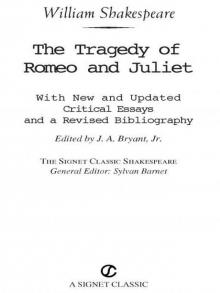 Romeo and Juliet
Romeo and Juliet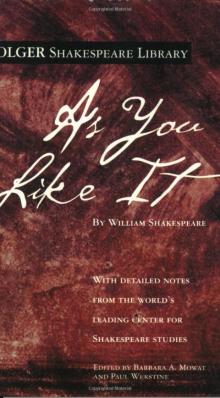 As You Like It (Folger Shakespeare Library)
As You Like It (Folger Shakespeare Library)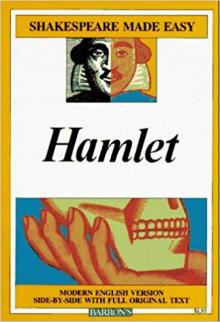 Hamlet
Hamlet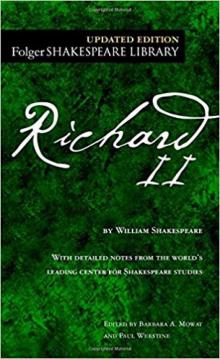 Richard II (Folger Shakespeare Library)
Richard II (Folger Shakespeare Library) Macbeth
Macbeth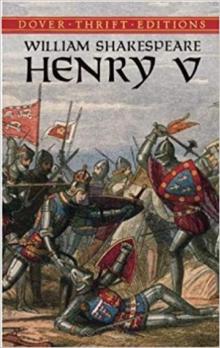 Henry V
Henry V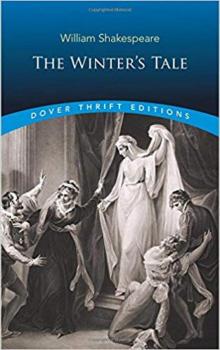 The Winter's Tale
The Winter's Tale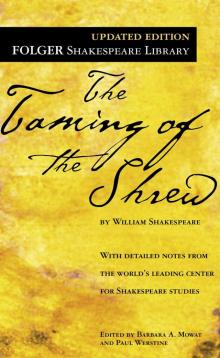 The Taming of the Shrew
The Taming of the Shrew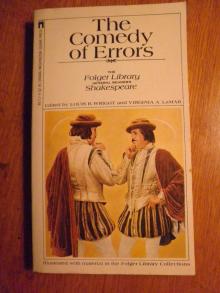 The Comedy of Errors
The Comedy of Errors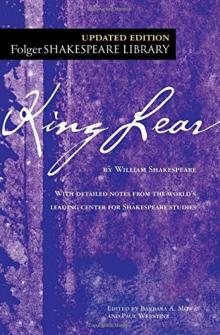 King Lear (Folger Shakespeare Library)
King Lear (Folger Shakespeare Library)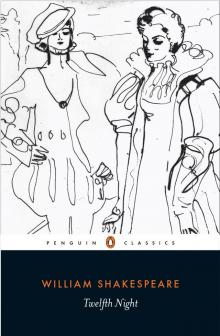 Twelfth Night
Twelfth Night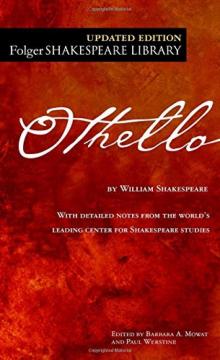 Othello
Othello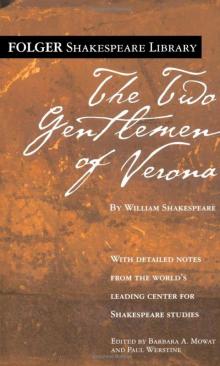 The Two Gentlemen of Verona
The Two Gentlemen of Verona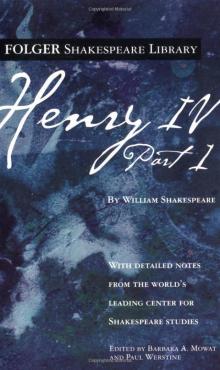 Henry IV, Part 1 (Folger Shakespeare Library)
Henry IV, Part 1 (Folger Shakespeare Library)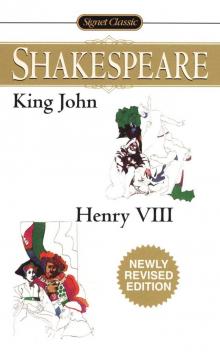 King John/Henry VIII (Signet Classics)
King John/Henry VIII (Signet Classics)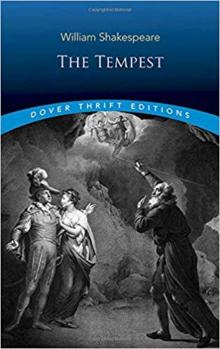 The Tempest
The Tempest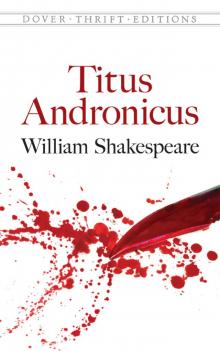 Titus Andronicus (Dover Publications)
Titus Andronicus (Dover Publications)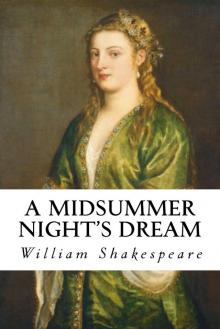 A Midsummer Night's Dream
A Midsummer Night's Dream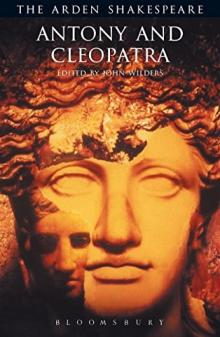 Antony and Cleopatra (Arden Shakespeare: Third Series)
Antony and Cleopatra (Arden Shakespeare: Third Series)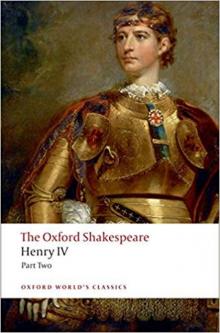 The Oxford Shakespeare: Henry IV, Part 2 (Oxford World's Classics)
The Oxford Shakespeare: Henry IV, Part 2 (Oxford World's Classics)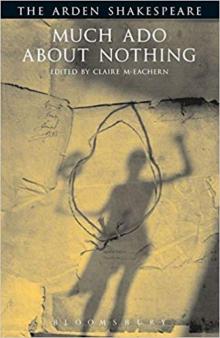 Much Ado About Nothing (Arden Shakespeare: Third Series)
Much Ado About Nothing (Arden Shakespeare: Third Series)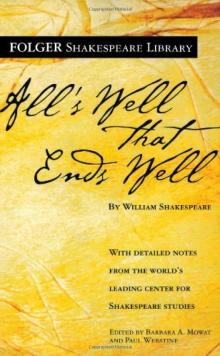 All's Well That Ends Well
All's Well That Ends Well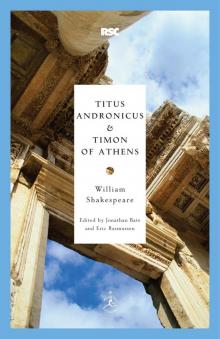 Titus Andronicus & Timon of Athens
Titus Andronicus & Timon of Athens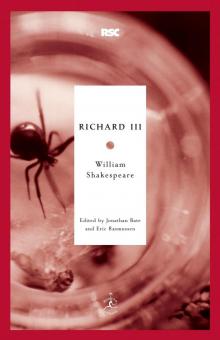 Richard III (Modern Library Classics)
Richard III (Modern Library Classics)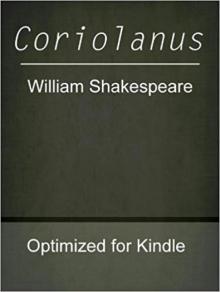 Coriolanus
Coriolanus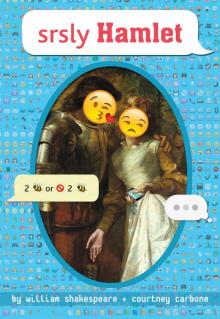 srsly Hamlet (OMG Shakespeare)
srsly Hamlet (OMG Shakespeare)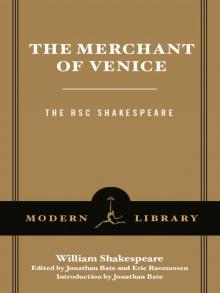 The Merchant of Venice
The Merchant of Venice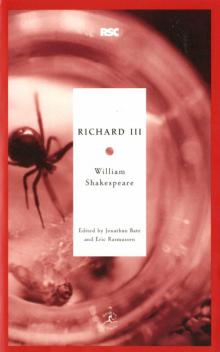 Richard III
Richard III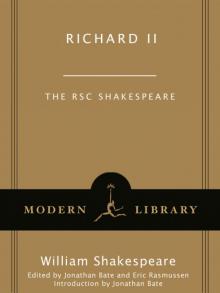 Richard II
Richard II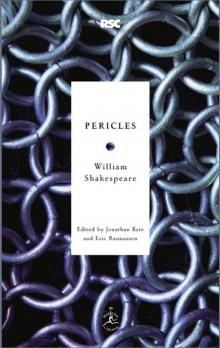 Pericles
Pericles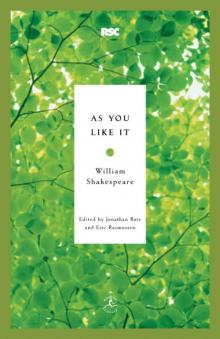 As You Like It
As You Like It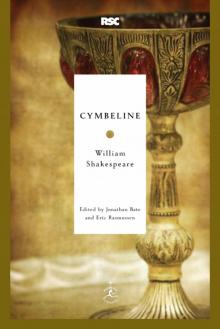 Cymbeline
Cymbeline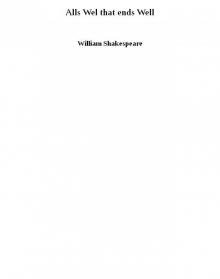 Alls Wel that ends Well
Alls Wel that ends Well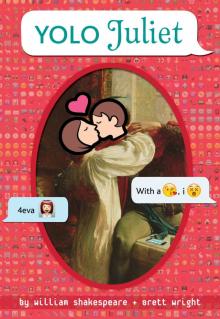 YOLO Juliet
YOLO Juliet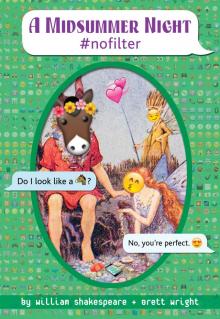 A Midsummer Night #nofilter
A Midsummer Night #nofilter Love's Labour's Lost
Love's Labour's Lost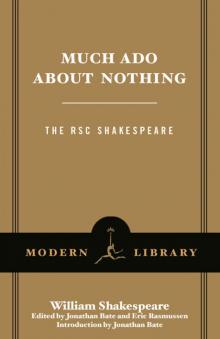 Much Ado About Nothing
Much Ado About Nothing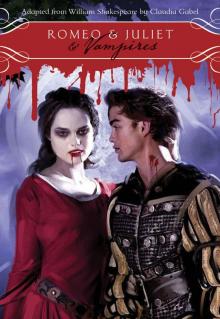 Romeo & Juliet & Vampires
Romeo & Juliet & Vampires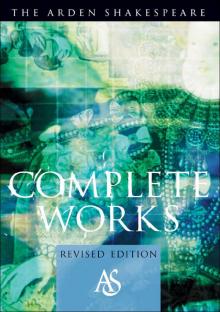 The Arden Shakespeare Complete Works
The Arden Shakespeare Complete Works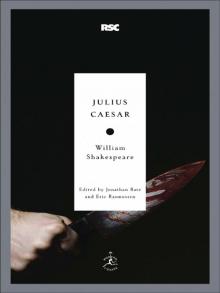 Julius Caesar
Julius Caesar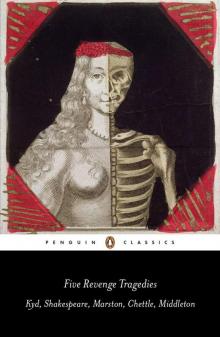 Five Revenge Tragedies: The Spanish Tragedy, Hamlet, Antonio's Revenge, The Tragedy of Hoffman, The Revenger's Tragedy (Penguin Classics)
Five Revenge Tragedies: The Spanish Tragedy, Hamlet, Antonio's Revenge, The Tragedy of Hoffman, The Revenger's Tragedy (Penguin Classics)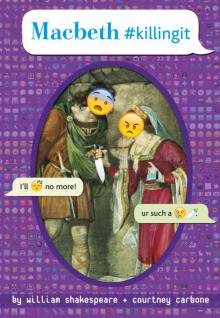 Macbeth #killingit
Macbeth #killingit The Oxford Shakespeare: The Complete Works
The Oxford Shakespeare: The Complete Works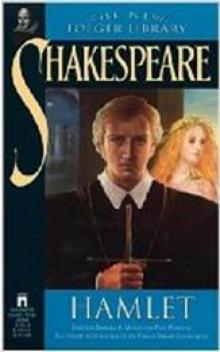 Hamlet, Prince of Denmark (Collins edition)
Hamlet, Prince of Denmark (Collins edition)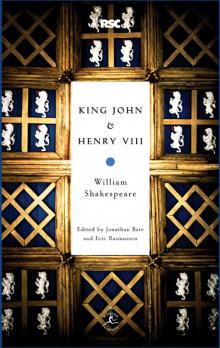 King John & Henry VIII
King John & Henry VIII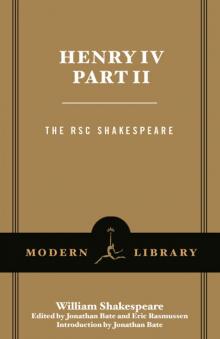 Henry IV, Part 2
Henry IV, Part 2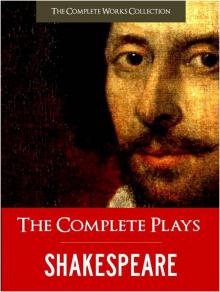 Complete Plays, The
Complete Plays, The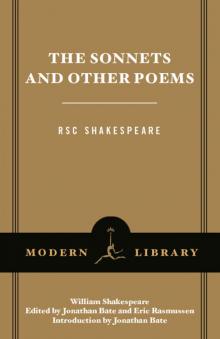 The Sonnets and Other Poems
The Sonnets and Other Poems Antony and Cleopatra
Antony and Cleopatra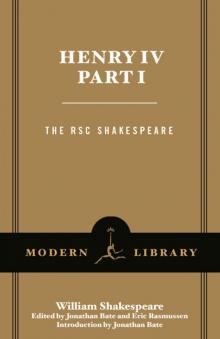 Henry IV, Part 1
Henry IV, Part 1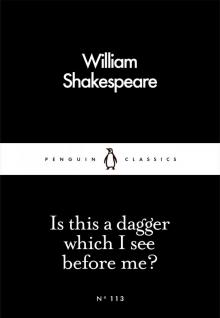 Is This a Dagger Which I See Before Me?
Is This a Dagger Which I See Before Me?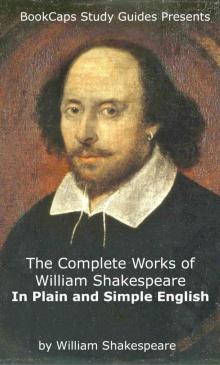 The Complete Works of William Shakespeare In Plain and Simple English (Translated)
The Complete Works of William Shakespeare In Plain and Simple English (Translated)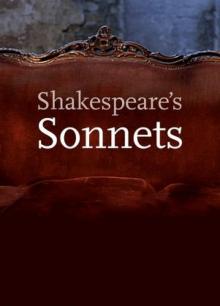 The Sonnets
The Sonnets